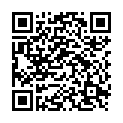|
|
|
| Module code: E405 |
|
|
1V+1U (2 hours per week) |
|
2 |
| Semester: 4 |
| Mandatory course: yes |
Language of instruction:
German |
Assessment:
Written examination
[updated 10.03.2010]
|
E405 (P211-0003) Electrical Engineering, Bachelor, ASPO 01.10.2005
, semester 4, mandatory course
|
30 class hours (= 22.5 clock hours) over a 15-week period.
The total student study time is 60 hours (equivalent to 2 ECTS credits).
There are therefore 37.5 hours available for class preparation and follow-up work and exam preparation.
|
Recommended prerequisites (modules):
E101 Mathematics I
E102 Physics I
E104 Fundamentals of Electrical Engineering I
E201 Mathematics II
E202 Physics II
E203 Fundamentals of Electrical Engineering II
E301 Mathematics III
[updated 10.03.2010]
|
Recommended as prerequisite for:
E505 Electrical Drive Systems
E511 Electrical Machines II
E607 Electrical Machines III
[updated 12.03.2010]
|
Module coordinator:
Prof. Dr.-Ing. Vlado Ostovic |
Lecturer:
Prof. Dr.-Ing. Vlado Ostovic
[updated 10.03.2010]
|
Learning outcomes:
This module prepares students specializing in power engineering for the study of electrical machines and drives and provides students taking other specialist courses with an overview of the most important concepts and relationships underlying conventional electrical machines.
After completing this module, students will have a solid understanding of the fundamental concepts of electromechanical energy converters, and in particular the steady-state performance characteristics of synchronous, induction and DC machines. They will be able to develop solutions to simple problems in the field of electrical machines.
[updated 10.03.2010]
|
Module content:
1.Steady-state operation of induction machines
1.1 The design and operating principles of induction machines
1.2 Effects of the fundamental air-gap flux density on the performance of
induction machines
1.3 Effects of the air-gap flux density harmonics on the performance of
induction machines
1.4 Self-excited induction machines
1.5 Single-phase machines
1.6 Capacitor braking mode
1.7 Motor speed control in induction motors
2.Steady-state operation of commutator machines
2.1 Performance of a DC machine
2.2 Induced voltage and electromagnetic moment
2.3 Armature reaction
2.4 Commutation
2.5 DC generators
2.6 DC motors
2.7 AC commutator machines
2.8 Motor speed control in commutator machines
3.Steady-state operation of synchronous machines
3.1 Design features of synchronous machines
3.2 Armature reaction and synchronous reactance
3.3 Operational performance of synchronous machines in which the cylindrical
rotor is attached to a constant-voltage, constant-frequency supply
3.4 Salient-pole machines
3.5 Permanent magnet excited synchronous machines
[updated 10.03.2010]
|
Teaching methods/Media:
Lecture notes, overhead transparencies, video projector
[updated 10.03.2010]
|
Recommended or required reading:
OSTOVIC, V: Elektrische Maschinen [Electric Machines], lecture notes
[updated 10.03.2010]
|


